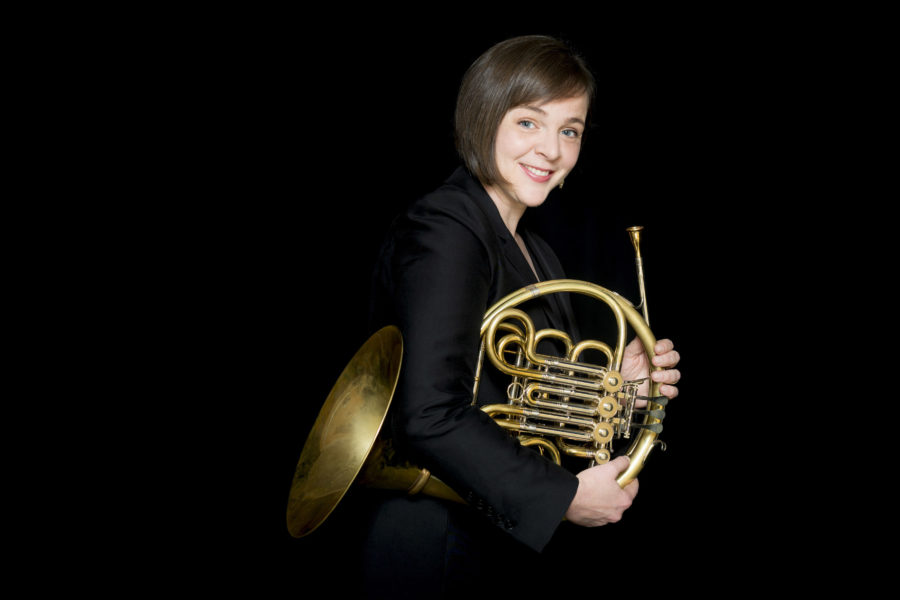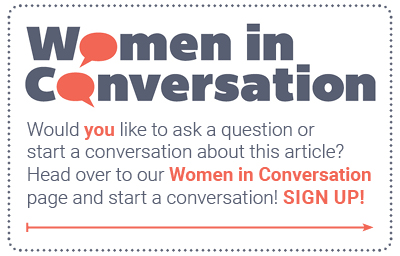French horn player Rachel Childers joined the Boston Symphony Orchestra on her 30th birthday.
That’s a big deal for any musician, but for a female brass player, it’s a big, big deal. In fact, back in 2011, Childers became the first woman in the brass section in the history of the BSO.
Musically speaking, Childers broke a glass ceiling. Classical music, like many other fields, is going through gender-based growing pains. Not that there hasn’t been progress for a while now. Since the 1970s, the percentage of female musicians in major American symphony orchestras has grown from approximately 10 percent to 25 percent.
Childers’ early career reads like a boiler-plate game plan, given extraordinary talent, rigorous discipline and enthusiastic ambition. Which is to say, serious study, constant practice, a day job and as many gigs as one can muster. She received undergraduate and graduate degrees from the University of Michigan, followed by an Artist Diploma from the Colburn Conservatory of Music in Los Angeles. While in California, Childers worked that day job, played gigs all over the state and auditioned wherever she could. Eventually, she racked up over 30 auditions, winning a position in the Colorado Symphony Orchestra.
For women, gaining a seat in a major symphony is an exacting process. Clarinet soloist Sabine Meyer, conductor Herbert von Karajan, and the scandal that took place in the early 1980s at the Berlin Philharmonic certainly has something to do with Childers’ entry into the BSO.
Von Karajan was, arguably, the world’s most admired conductor, leading the fabled all-male Berlin Philharmonic. Orchestras have different ways of evaluating potential members. In Berlin’s case, the entire orchestra has a vote. Von Karajan wanted Meyer to join the orchestra. The boys did not. Meyer was appointed to a probationary period, at the end of which a vote came in 73 against, 4 in favor. The men claimed she did not blend with their sound. Von Karajan was not pleased. Meyer had enough and headed out the door. Now she’s an international soloist, with a great career, playing with the world’s major orchestras. (Ironically, she recorded the Mozart clarinet concerto with Claudio Abbado conducting, and, you guessed it, the Berlin Philharmonic.)
The Berlin scandal, happening as it did, at a time when the women’s movement was pushing the envelope in all fields, was covered in major press around the world and did prompt some positive change. Auditions began taking place behind a screen, so that the player is completely anonymous. Carpeting has even been added to disguise the sound of women’s heels clicking on the floor.
When you look at the balance of female to male in schools and conservatories, the balance is very good. In the top orchestras, there are many more female strings than woodwinds and brass. There is a logical reason for this, which is that there are by far, fewer positions, so that the turn over, in other words, the availability of a position, happens much less frequently. — Rachel Childers
Childers, who is right at home with the rest of the BSO horn section, has a sensible approach to the gender balance in orchestras, especially when looking at the slow progression of female horn players. Generally, an orchestra has 62 string players versus 35 woodwinds, brass (which includes five horn players) and percussion.
“When you look at the balance of female to male in schools and conservatories, the balance is very good. In the top orchestras, there are many more female strings than woodwinds and brass,” she says. “There is a logical reason for this, which is that there are by far, fewer positions, so that the turn over, in other words, the availability of a position, happens much less frequently.”
It should come as no surprise that female musicians do advocate for each other. Carole Dawn Reinhart, now a successful, internationally known trumpet soloist and distinguished professor, is a member of The International Women’s Brass Conference, an organization that educates, promotes, supports and inspires.
Putting things in historical perspective, Reinhart mentions a musicians’ union rule passed in 1925 that mandated male and female musicians have the equal salaries. A theater owner responded, “If I have to pay everyone the same, then I’ll hire all men, and have a good orchestra!”
At the start of Reinhart’s own career in the 1960s, she received a Fulbright to study in Vienna. Detailing her experience, she says, “My trumpet teacher, Professor Helmut Wobisch said that if I were a man, he would have gotten me in the Vienna Philharmonic. [Today,] the climate has definitely changed for young women musicians in general. Even in Vienna, there are finally women in the Vienna Philharmonic.”
I absolutely believe we are role models. For female horn players, sure, and perhaps all up-and-coming horn players. I know I idolized the Detroit Symphony Orchestra horn section and was lucky enough to study with the DSO legend Louis Stout. — Rachel Childers
Childers, who teaches at New England Conservatory of Music when she’s not performing with the BSO, does believe in leading by example. “I absolutely believe we are role models, for both male and female players. I know I idolized the Detroit Symphony Orchestra horn section and was lucky enough to study with the DSO legend Louis Stout.”
Childers, Reinhart and female musicians working professionally worldwide, look forward to the day when the word “female” is removed from the equation. They look forward to the day that a musician is a musician, gender irrelevant.



 4 min read
4 min read




